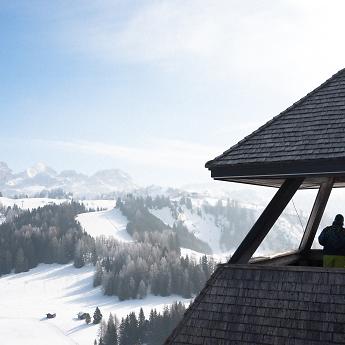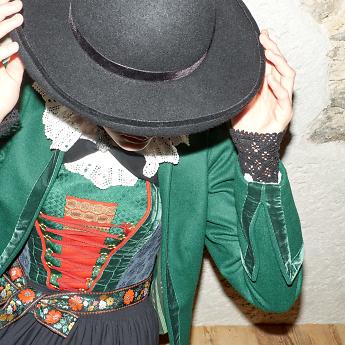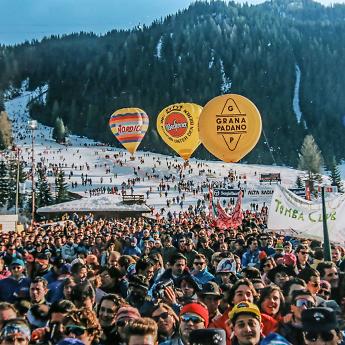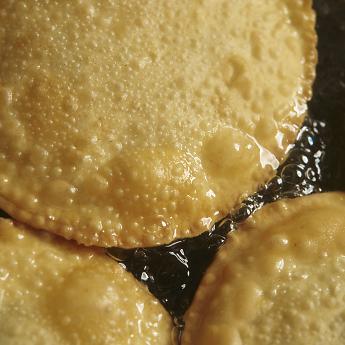
There aren’t any recipes
Slow, resilient, time-honoured: Ladin cuisine
Things of the past, gone but not forgotten. Signora Tecla of Ciasa Urban in Badia remembers very well that when she was little, there was one day when she made bread together with the whole family and the neighbours as well. Just one day, but all day and all night. She kneaded a lot of dough because there had to be enough, and then she would dry it so it would last the whole year, and it could be eaten softened with milk or water or whatever there was. Only a few decades have passed since bread was made like this in Alta Badia and Tecla remembers it well, but it seems like centuries ago now, because in just a few years everything has changed very quickly.
Ladin cuisine on the other hand is slow, resilient and has a time-honoured flavour. Such things are normal for Tecla, and she laughs at me when I ask her to tell me about Ladin cuisine or give me recipes. Recipes don't exist – they do things the same way their grandmothers did - and Ladin cuisine, for her, is that of her childhood, which has the flavour of fresh currant juice drunk in the summer. The same thing happens a little further on at Maso Runch, where I go into the kitchen just as Enrico Nagler’s family is busy hand-closing one by one the cajinci, crescent-shaped panzerotti made with flour and potatoes and stuffed with spinach. It’s home cooking, they tell me, as if it were strange to have to explain to me the extraordinary nature of something that, for them, is perfectly normal. However, they do tell me, in all seriousness, that the tutres, the delicate round pancakes of very thin puff pastry stuffed with herbs or potatoes or sauerkraut or a drizzle of ricotta, should be eaten hot, held in one hand while the other holds the spoon to drink, sip after sip, the barley panicia. A bite of the pancake, followed by a spoonful of soup. That’s how it’s done.
What I understood from all this is that there is no one single form of Ladin cuisine, rather each valley has its own versions and small differences; like the language, that’s how it happens and, except for a short list of dishes, more than anything else, Ladin cuisine is a style of cooking. An attitude, if you like - poor but filling food, they call it, because hard work was the order of the day and food was nourishment to sustain people.
Tutres, for example, were cooked on Saturdays because it took a long time to prepare them. A few more than necessary were always prepared, so if there were any left over, they could be eaten the next day, on Sunday.
Time is a fundamental ingredient in Ladin cuisine, because you need a lot of it. There was plenty of it and it was free. What instead was missing was everything else, in fact, the ingredients in traditional Ladin recipes can be counted on the fingers of one hand, more or less: flour, butter, barley, potatoes and herbs. Barley because it is the cereal that ripens fastest, even with very little sun; and in order to make flour for kneading, carob or dried broad beans were ground up, while poppies were eaten, and the seeds were used to sweeten fritters.
Regardless of the list of dishes or ingredients, you understand that you are eating Ladin cuisine every time you find yourself in front of an ancient, simple, intriguing flavour that opens up a universe of stories of toil and enchantment, simple yet powerful rituals, and of sharing and nature. It is a form of cuisine that is distant in terms of time but nearby in terms of sentiment, because it is the cuisine of not wasting, of circularity, of planning in advance, of left-over ingredients, intelligent saving and elegant economy. Why is it so popular, I ask Antonio (called Tone) who always has plenty of tourists trying Ladin cuisine at his Alfarëi farm. He doesn't know, but he thinks it's because it is simple and natural.
And it is. Ancestral, because it is uncontaminated.
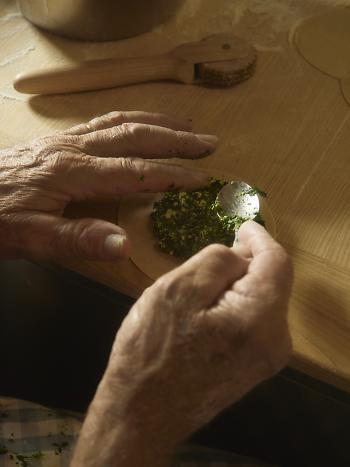
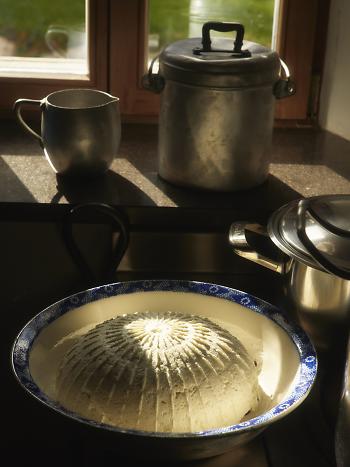
Before the Val Badia road was inaugurated in 1892, it took ten hours to go from Brunico to Corvara, a journey of less than thirty kilometers, although there was no reason to come to the valley. The first visitors were English and German, who were looked at with curiosity, while the first people to frequent the Dolomites were geologists, who were considered eccentric because they exchanged money for stones, which they bought with great interest. There was no tourist development in the valley at that time and this situation continued until the Second World War. The 1970s saw the beginning of the abandonment of traditional professions as the tourism sector offered new job opportunities. The desire for a modern life grew and with it, also the desire for modern foods.
This isolation of Ladin cuisine allowed it to stay immune from outside influences, remaining authentic and ancient, albeit with tremendous effort. It is a combination of territory, climate, men and women. Above all, it is the result of the inventions and experiences that men and women have created and undergone in that particular area and climate, often at their own expense.
This was the case with potatoes, which in the Ladin language are called soni or sansoni and the reason is a story that deserves to be told, because it all centres around the year 1816, described as the year without a summer. This was because that year, the sun never rose and there was no warmth all summer. Some time later, it was learned that the cause was the eruption of a volcano in Indonesia that was so violent that the ash darkened the skies of Europe. In an attempt to save as many people as possible from hunger, later that year large quantities of potatoes arrived from Saxony, which had never been seen before in the valley and no one knew how to eat or prepare them. Raw? Cooked? Soni or sansoni, sounds like Saxons, right? Language and food are always connected by a story.
Ladin cuisine has adopted a feminine and alchemical approach, which nourishes and inspires, transforming a few simple ingredients into complex and substantial creations. It reproduces, cares for and expresses generosity and participation, along with mental and physical creativity. It acts with a sense of responsibility towards others, as well as respect for resources and future generations. It knows the wild herbs, and uses them for healing, for herbal teas, unguents and syrups. It knows how to read the moon and the stars.
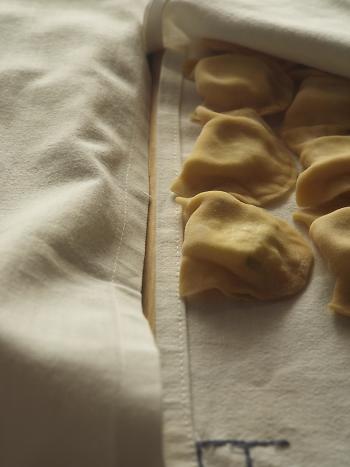

Before ending my gastronomic journey, I stop at the Micurá de Rü Ladin Institute, which works to ensure the protection and promotion of the Ladin language, with the aim of preserving its written and spoken usage. For a long time, Ladin was exclusively an oral language, with no real need to be written. Today, however, there is an urgent need to create new words and neologisms to describe contemporary reality, since the traditional lexicon, linked to peasant life, is often insufficient. Ladin words can be compared to Ladin cuisine and dishes: there are few of them, they are simple, linked to tradition and the daily routine of rural life. Perhaps it is precisely this considerable oral component that makes them immortal. Writing fixes words, while the language, like cuisine, is constantly evolving and thus manages to adapt to modern times. Being an ancient language, born in the peasant world, Ladin has a rich lexicon to describe a universe that today, in part, no longer exists. Some words have fallen into disuse, while others must be reinvented to keep the Ladin language and culture alive.
Cooking is a universal language, which does not need to be expressed in words. For me as a gourmet, it is cooking that marks the identity of a people. For a lexicographer, however, it is language that determines a community. Yet cooking, like language, changes from valley to valley, from house to house, from family to family, yet all the while remaining true to itself. However cooking, as anthropologist Franco La Cecla says, is the most accessible threshold of every culture, and it is quicker to approach a typical dish than to learn the Ladin language. This is entirely true for me since I am hopeless with languages, but I understand food when it speaks to me. And people here understand this too. So, when I taste rye bread, when I hear hot butter sizzling on the dumplings, when I see the tenderness of meat that simply falls off the bone after having been cooked for hours and hours, releasing the scents of spices and mountain herbs, when I lose myself in the endless fragrance of an apple fritter, I understand precisely what Ladin cuisine is and why it exists and endures.
A journalist, writer and gourmet, Martina Liverani is interested in food and items of human interest. In 2013 she founded the magazine Dispensa, which won the “Gourmand World Cookbooks Award” in 2017 as the best Italian food magazine and second worldwide. She writes about cooking for La Repubblica, Vogue Italia, Monocle, Vanity Fair, Identità Golose, La Cucina Italiana and other magazines. She is the author of the books Manuale di cucina sentimentale (Baldini&Castoldi, 2013) and Atlante di Geogastronomia (Rizzoli, 2020).
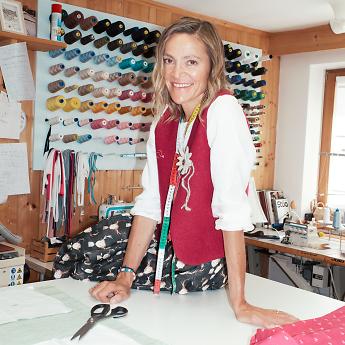
Intervista con Anita Vittur, stilista, sarta di abiti tradizionali, maestra di sci e spirito libero
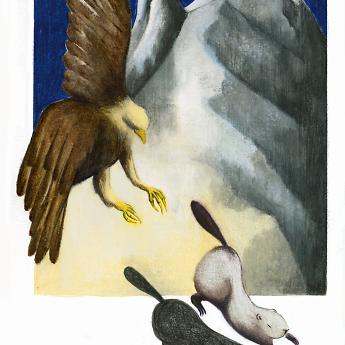
Legends that need to be read



































